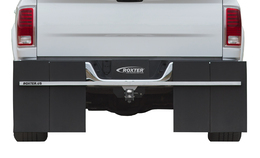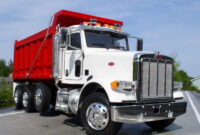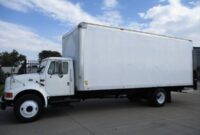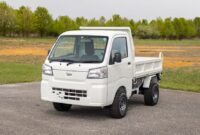Wheelchair Lifts For Pickup Trucks pickup.truckstrend.com
The open road, the freedom of movement, and the rugged utility of a pickup truck – for many, this combination represents the epitome of independence. However, for individuals who rely on wheelchairs or mobility scooters, accessing and transporting their mobility devices with a pickup truck can present a significant challenge. This is where wheelchair lifts for pickup trucks step in, transforming a logistical hurdle into a gateway to enhanced accessibility and uncompromised adventure.
A wheelchair lift for a pickup truck is a specialized piece of equipment designed to safely and efficiently load and unload a wheelchair or scooter into or onto a truck. These lifts are engineered to accommodate various mobility devices, from lightweight manual wheelchairs to heavy-duty power chairs and scooters, bridging the gap between personal mobility and vehicle utility. Their importance cannot be overstated; they empower individuals with disabilities to maintain their active lifestyles, access employment, enjoy recreational activities, and travel without the constant worry of how to transport their essential mobility aids.
Wheelchair Lifts For Pickup Trucks
Understanding Wheelchair Lifts for Pickup Trucks
Pickup trucks, with their robust frames, higher ground clearance, and expansive bed space, offer unique advantages for wheelchair users. They can navigate diverse terrains, tow trailers, and carry significant loads, making them ideal for those with active lifestyles or specific work requirements. However, the height of a truck bed or tailgate makes manual loading of a wheelchair impractical or impossible for most. Wheelchair lifts solve this by providing a mechanical means to raise and lower the device.
These lifts come in various configurations, each designed to meet different needs, vehicle types, and user preferences. The primary goal is always the same: to provide a secure, reliable, and user-friendly method for transporting a wheelchair or scooter, ensuring it’s protected and ready for use upon arrival.
Types of Wheelchair Lifts for Pickup Trucks
Choosing the right lift begins with understanding the different types available, each with its own advantages and considerations.
1. Exterior (Hitch-Mounted) Lifts
These are the most common type for pickup trucks, attaching to the vehicle’s trailer hitch receiver. They are ideal for users who need to transport an unoccupied wheelchair or scooter and wish to keep their truck bed free for other cargo.
- Platform Lifts: These lifts feature a flat platform that the wheelchair or scooter drives onto. The platform is then automatically raised and lowered by an electric motor.
- Pros: Easy drive-on/drive-off access, robust, suitable for heavier power chairs and scooters, keeps truck bed clear.
- Cons: Extends behind the truck (adds to vehicle length), can obstruct taillights or license plate (though many have integrated solutions), exposes the mobility device to weather, may block access to the truck bed tailgate when deployed or stowed.
- Boom or Hoist Lifts: These lifts use an arm (boom) with a strap or hook to lift and pivot the mobility device into the truck bed or onto a hitch-mounted carrier. The device is typically disassembled or folded before lifting.
- Pros: Lighter weight, more versatile for different vehicle types, less obstruction when stowed, can often be used to load into the bed or onto a platform.
- Cons: Requires manual manipulation to attach the device, not suitable for occupied transfers, often requires folding the wheelchair, less stable during the lift compared to a platform.
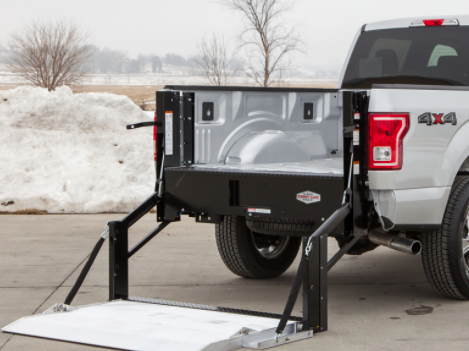


2. Interior (Truck Bed Mounted) Lifts
These lifts are installed directly within the truck bed, designed to lift and secure an unoccupied wheelchair or scooter.
- Power Lifts (Inside the Bed): Similar to hoist lifts but mounted inside the bed, these systems lift the wheelchair from the ground and swing it into the truck bed, often securing it automatically.
- Pros: Protects the mobility device from weather and theft, keeps the device secure, doesn’t add to vehicle length, allows for tailgate use (when lift is not in use).
- Cons: Occupies valuable truck bed space, requires the user to walk around the truck to access the device, not suitable for occupied transfers.
- Underbody Lifts (Less Common for Pickups): While more common for vans, some highly specialized and custom pickup truck conversions might incorporate an underbody lift that stores the wheelchair beneath the vehicle, sliding out when needed. These are complex and expensive.
The Unmistakable Benefits of a Pickup Truck Wheelchair Lift
Investing in a wheelchair lift for your pickup truck offers a multitude of benefits that extend beyond mere transportation.
- Enhanced Independence and Mobility: This is the primary advantage. Users can travel where they want, when they want, without relying on assistance to load their mobility device.
- Safety and Security: Lifts are designed to safely load and secure wheelchairs, preventing damage to the device and injury to the user or caregiver. They also protect the device from road debris and potential theft (especially interior lifts).
- Preserving Vehicle Interior: By transporting the wheelchair externally or in the bed, the truck’s cabin remains free for passengers and other cargo, avoiding wear and tear or dirt from the mobility device.
- Versatility of the Pickup Truck: The core utility of the pickup truck – its hauling and towing capabilities – remains largely intact. Many exterior lifts can be detached, and interior lifts are designed to minimize obstruction when not in use.
- Ease of Use: Modern lifts are often fully automatic, operated with a simple push of a button or a remote control, making loading and unloading effortless.
- Durability and Longevity: Built to withstand the elements and heavy use, these lifts are durable investments designed for years of reliable service.
Key Considerations When Choosing Your Lift
Selecting the ideal wheelchair lift requires careful evaluation of several factors to ensure compatibility, safety, and satisfaction.
- Wheelchair/Scooter Type and Weight: This is paramount. Manual wheelchairs, power wheelchairs, and mobility scooters vary significantly in size and weight. The lift’s weight capacity must exceed the weight of your device. Also consider dimensions (width, length, height) for platform size or lift arm reach.
- Vehicle Compatibility:
- Truck Model and Year: Different trucks have different bed dimensions, hitch classes, and electrical systems.
- Hitch Class (for Exterior Lifts): Ensure your truck has a compatible hitch receiver (Class III or IV is usually required) and sufficient tongue weight capacity.
- Bed Size (for Interior Lifts): Ensure the truck bed is large enough to accommodate the stowed lift and the mobility device.
- Electrical System: Most lifts require a dedicated power source from the truck’s battery, often requiring professional wiring.
- User Needs and Capabilities:
- Occupied vs. Unoccupied Transport: Most pickup truck lifts are for unoccupied devices. If you need to transport an occupied wheelchair, a different vehicle type (like a minivan or full-size van with a ramp or platform lift) is usually necessary.
- Physical Strength and Dexterity: While many lifts are automatic, some require a degree of manual manipulation (e.g., attaching straps for a hoist lift).
- Installation and Maintenance:
- Professional Installation: Highly recommended for safety and warranty purposes. A professional installer will ensure proper mounting, wiring, and functionality.
- Vehicle Modification: Some installations may require minor drilling or electrical work.
- Maintenance: Consider the ease of maintenance. Exterior lifts may require more frequent cleaning due to exposure to elements.
- Budget and Cost: Lifts vary significantly in price based on type, features, and brand. Factor in the cost of the lift itself, professional installation, and potential long-term maintenance.
- Environmental Factors: If you live in an area with harsh weather conditions, an interior lift might offer better protection for your mobility device than an exterior one.
Installation, Operation, and Maintenance Tips
Ensuring the longevity and safe operation of your wheelchair lift involves proper installation, understanding its functions, and regular maintenance.
Installation
- Always Opt for Professional Installation: While some handy individuals might consider DIY, professional installation by certified technicians is crucial. They have the expertise to ensure the lift is securely mounted, correctly wired, and calibrated for your specific vehicle and mobility device. This also typically preserves your lift’s warranty.
- Check Electrical System: Ensure your truck’s electrical system can support the lift’s power requirements. A dedicated fuse and proper wiring are essential.
- Confirm Fit: Before installation, double-check that the chosen lift model is indeed compatible with your truck and your specific mobility device’s dimensions and weight.
Operation
- Read the Manual: Thoroughly understand your lift’s operation manual. Learn all controls, safety features, and emergency procedures.
- Practice in a Safe Environment: Before your first real trip, practice loading and unloading your wheelchair or scooter in a clear, level, and safe area.
- Secure the Device: Always ensure your wheelchair or scooter is properly secured on the platform or attached to the hoist before activating the lift. Use all provided tie-downs or locking mechanisms.
- Clear the Area: Ensure no people, pets, or objects are in the lift’s path during operation.
- Never Exceed Weight Capacity: This is critical for safety and to prevent damage to the lift and your mobility device.
Maintenance
- Regular Inspections: Periodically check all moving parts, electrical connections, bolts, and fasteners for wear, corrosion, or looseness.
- Lubrication: Follow the manufacturer’s recommendations for lubricating moving parts to ensure smooth operation and prevent wear.
- Battery Care: If your lift has its own battery or draws heavily from your truck’s battery, ensure the battery is in good condition and charged.
- Cleaning: Especially for exterior lifts, regularly clean off dirt, salt, and debris to prevent corrosion.
- Professional Servicing: Schedule periodic professional servicing as recommended by the manufacturer to ensure optimal performance and address any potential issues.
Estimated Price Guide for Wheelchair Lifts for Pickup Trucks
Please note that these are estimated prices and can vary significantly based on brand, specific model, features, dealer, and installation costs. Installation typically adds $500 – $1,500+ to the lift price.
| Lift Type | Description | Estimated Price Range (USD) | Key Considerations |
|---|---|---|---|
| Exterior Platform Lift | Hitch-mounted, platform for drive-on/drive-off, automatic operation. | $2,500 – $6,000 | Requires Class III/IV hitch; adds length to vehicle; exposes device to elements. |
| Exterior Boom/Hoist Lift | Hitch-mounted, uses an arm to lift and pivot device, manual attachment. | $1,800 – $4,500 | Lighter, more versatile; requires manual effort for attachment; not for occupied. |
| Interior Truck Bed Lift | Mounted inside the truck bed, lifts device from ground into bed. | $3,000 – $7,000 | Protects device from weather/theft; occupies bed space; not for occupied. |
| Manual Hoist Lift | Simpler, often less motorized, requires more manual effort. | $800 – $2,000 | Most budget-friendly; requires significant user strength; very basic functionality. |
| Installation Costs | Professional installation for any type of lift. | $500 – $1,500+ | Varies by complexity and technician rates; highly recommended for safety/warranty. |
| Accessories | Weather covers, specific tie-downs, remote controls, specialized hitches. | $100 – $500+ | Enhance functionality, protection, or convenience. |
Disclaimer: Prices are estimates only and subject to change. Always get a detailed quote from a reputable dealer.
Frequently Asked Questions (FAQ)
Q1: Can I install a wheelchair lift myself?
A1: While some simpler manual lifts might be DIY-friendly, professional installation is highly recommended for most powered wheelchair lifts. This ensures safety, proper function, and adherence to warranty requirements.
Q2: Will a wheelchair lift damage my truck?
A2: When properly installed by a professional, a wheelchair lift should not damage your truck. Any necessary modifications (like drilling for mounting) are typically minor and done in a way that preserves the truck’s integrity.
Q3: Can I transport an occupied wheelchair with these lifts?
A3: The vast majority of wheelchair lifts for pickup trucks are designed for unoccupied wheelchairs or scooters. Lifts for occupied transfers are usually found on specially converted vans or full-size vehicles.
Q4: How much weight can a pickup truck wheelchair lift hold?
A4: Weight capacities vary by model, typically ranging from 200 lbs for lighter manual chair lifts to over 400 lbs for heavy-duty power chair and scooter lifts. Always check the lift’s specifications and ensure it exceeds the weight of your mobility device.
Q5: Are these lifts covered by insurance or government programs?
A5: Coverage varies. Some health insurance policies, state vocational rehabilitation programs, or VA benefits may offer assistance. It’s best to check with your specific provider or relevant government agency.
Q6: How does weather affect exterior wheelchair lifts?
A6: Exterior lifts are built to be weather-resistant, but prolonged exposure to rain, snow, and road salt can accelerate wear. Regular cleaning and maintenance are crucial. Many users opt for weather covers to protect their mobility device and the lift mechanism.
Q7: Do I need a special license to drive a truck with a wheelchair lift?
A7: No, a special license is not typically required unless the combined weight of your truck and the lift/mobility device exceeds specific commercial vehicle weight limits, which is rare for standard consumer pickups.
Conclusion
Wheelchair lifts for pickup trucks are more than just mechanical devices; they are enablers of freedom, independence, and an active lifestyle. By carefully considering the various types, understanding their benefits, and evaluating your specific needs against key considerations, you can select the perfect lift to complement your pickup truck and empower your journey. With professional installation, proper operation, and diligent maintenance, a wheelchair lift will serve as a reliable partner, ensuring that your mobility device is always ready to take you wherever your pickup truck can go, opening up a world of possibilities and reaffirming the joy of the open road.
